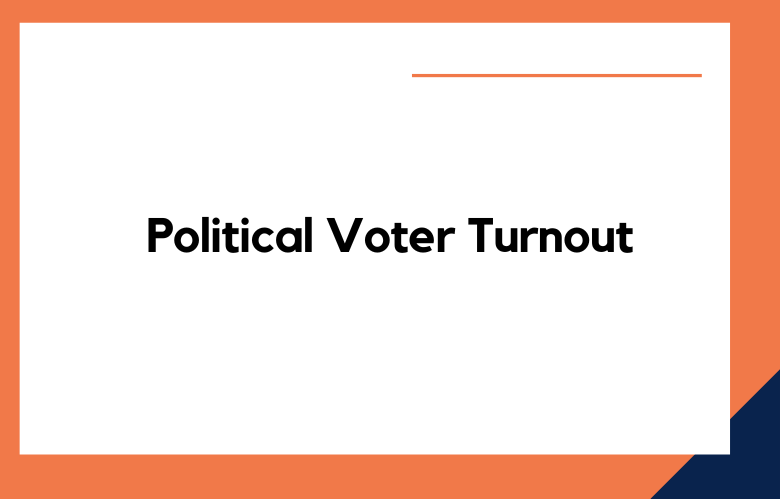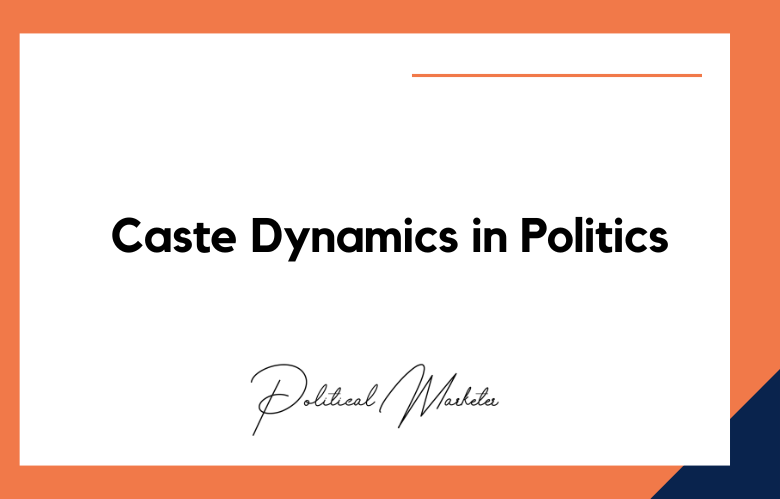Political voter turnout has always been a primary concern for politicians and citizens alike. Many strategies have been employed to increase voter turnout, including door-to-door canvassing, phone banking, and advertising campaigns. However, despite years of these efforts, voter turnout has remained stagnant. With the introduction of advanced technologies like generative artificial intelligence (AI), there might Be a powerful solution to increase political voter turnout.
Generative AI, also known as deep learning, is software that helps machines perform tasks typically done by humans, such as processing information and making predictions.
In the past, deep learning was primarily used in fields like natural language processing and image recognition. However, recently, researchers have explored the potential of using generative A.I. to increase political voter turnout.
The Data-driven Ballot Box: Transforming Voter Turnout with Generative A.I.
The Data-driven Ballot Box promises to revolutionize the way voter turnout occurs during elections.
By leveraging the power of Generative Artificial Intelligence (AI), the tool aims to overcome the age-old problem of low voter turnout by predicting the behavior of voters and creating a personalized outreach plan that can inspire citizens to vote.
The tool utilizes machine learning techniques to analyze vast amounts of historical data on voting patterns, demographic information, and other variables influencing voter turnout.
Based on this analysis, it can predict the likelihood of an individual voter coming to the polls and develop a tailored outreach strategy that caters to their characteristics.
Beyond Predictions: How Generative A.I. Can Drive Political Voter Activation
With the 2020 U.S. presidential election around the corner, the discussion on voter activation and turnout has become more crucial than ever.
While machine learning and predictive analytics have been widely used in the political realm to target voters and predict their behavior, the true potential of generative A.I. for political campaigns is yet to be fully explored.
Generative AI refers to algorithms that can create new data based on the patterns and structures of existing data. This technology can generate personalized content, such as social media posts, emails, and even videos, that speaks directly to each voter based on their preferences, interests, and values.
By incorporating generative AI into political campaigns, political parties and their candidates can effectively engage and activate voters, especially those who are apathetic or undecided.
Maximizing Political Influence: Harnessing Generative A.I. for Higher Voter Participation
Maximizing political influence is critical for politicians and parties seeking to win elections. A successful political campaign must resonate with voters and maximize voter participation on Election Day.
With the advent of generative AI, politicians, and political strategists are exploring new ways to engage voters and significantly impact the political landscape.
Harnessing generative A.I. technology provides a unique opportunity to connect with voters and encourage them to participate in elections.
Generative AI can analyze vast amounts of data related to voting trends, demographic information, and social media interactions to identify critical issues voters care about. This allows politicians and their teams to craft targeted messages and create personalized communications to reach potential voters.
The AI-Powered Voting Booth: Unlocking the Potential of Generative A.I.
Artificial Intelligence has revolutionized numerous industries and brought about transformative changes, and the voting system is no exception.
The concept of AI-powered voting booths is an innovation with the potential to unlock many benefits, including increased security and accuracy, improved efficiency, and a smoother voting process.
One of the primary advantages of introducing A.I. into voting booths is enhancing security. By leveraging machine learning algorithms, the technology can detect and prevent fraudulent activities like hacking, tampering, and vote-rigging.
The AI-based systems can flag any irregularities, including suspect voting patterns, and alert election officials, thus preventing unauthorized access and preserving the integrity of the election.
Reviving Democracy: How Generative A.I. Could Reignite Voter Interest in Politics
Democratic governments worldwide have been struggling with a growing lack of voter engagement and participation in recent years, leading to a crisis of legitimacy and declining trust in democratic institutions.
In a time when access to information and social media platforms are more readily available than ever, the challenge has become to use technology to break down barriers and create new avenues for dialogue and engagement between citizens and their representatives.
Generative AI could be the key to tackling this pressing issue and unlocking a more democratic and inclusive political process. Generative AI is artificial intelligence that uses algorithms, data, and machine learning to create new and unique content, ideas, and solutions.
By leveraging the power of generative AI, governments and political organizations could tap into the collective wisdom of their constituents to create more responsive and representative policies that reflect the needs and aspirations of the people they serve.
Benefits of Generative A.I. and the Potential for Improved Political Voter Turnout
Identifying voters
One of the critical applications of Generative A.I. in politics is identifying voters. This technology can analyze public records and voter databases to identify voters likely to vote.
Political campaigns can use this information to focus their efforts on engaging and mobilizing individuals less likely to vote, thereby increasing their chances of winning.
By identifying voters who may skip the polls, campaigns can work to address their concerns and provide them with relevant information that will encourage them to vote.
Targeting voters
Generative AI can also aid political campaigns in targeting voters. After identifying voters, this technology can evaluate their demographic information, voting history, and interests to personalize campaign messages.
By tailoring messages to specific demographics and interests, campaigns can increase their effectiveness in persuading voters to turn out to the polls. Moreover, personalized messages can create a sense of connection with voters, increasing their motivation to vote.
Persuading voters
The most powerful application of Generative AI in politics is in persuasion. This technology can generate messages most likely to persuade specific voters by analyzing vast amounts of data from multiple sources.
Generative A.I. can create content tailored to each voter, such as videos, texts, and social media posts, ensuring they resonate with their interests and priorities. This can make campaigns more efficient, making them more effective at reaching and motivating voters to take action.
Bias and ethics
While Generative AI has enormous potential to improve voter turnout, there are challenges. One of the most significant concerns is bias. When using this technology to identify voters, it may prioritize specific demographics or communities, leading to a skewed representation and further deepening inequalities.
There are ethical concerns with using Generative AI. Personalized messages may be too persuasive or manipulative. It is essential, therefore, to ensure that this technology adheres to ethical principles and does not disrupt the democratic process.
Future Implications
Generative A.I. is still a relatively new technology, but its potential for improving political voter turnout is vast. In the future, Generative A.I. may become more advanced in identifying, targeting, and persuading voters, leading to even higher turnout in elections.
However, political campaigns must ensure this technology is used responsibly and ethically. If used right, Generative AI can drive positive change in politics, making democracy more accessible and inclusive for everyone.
The Future of Politics: How Generative A.I. Could Improve Voter Turnout
Voter turnout in the U.S. has been a problem for decades. Despite the 2020 election being one of the most crucial in modern history, only 67% of eligible voters cast their ballot.
This begs the question: how can we encourage more people to participate in democracy?
One potential solution lies in the world of generative AI. By leveraging this technology, organizations can create compelling content that resonates with likely voters and encourages them to take action.
We’ll explore how generative AI works, why it can potentially increase voter turnout, and what challenges still need to be addressed.
The first thing we need to do is define what generative A.I. means. Unlike discriminative A.I., which is designed to classify data based on existing categories, generative A.I. is used to create new data that is not yet in place.
Conclusion:
As generative AI advances, researchers will likely explore more ways to use this technology to improve political voter turnout. While there are concerns about using A.I. in political campaigns, its potential benefits must be noticed.
If generative AI can be used ethically and responsibly, it could increase political voter turnout in the U.S. and elsewhere.
Call: +91 9848321284
Email: [email protected]
Generative AI and the Potential for Improved Political Voter Turnout: FAQs
What is generative AI in the context of voter turnout?
Generative AI refers to machine learning models that can create text, images, or media content designed to inform, persuade, or engage voters—ultimately aiming to boost turnout during political campaigns.
How can generative AI influence voter participation?
By delivering personalized reminders, creating compelling narratives, and addressing voter concerns through targeted messaging, generative AI can motivate more people to vote.
Can generative AI help identify likely non-voters?
Yes. AI models can analyze historical voting data, behavior patterns, and demographics to predict which segments are least likely to vote, allowing campaigns to target them directly.
How does AI personalize voter outreach?
Generative AI uses data like voter interests, location, past engagement, and social behavior to generate tailored content that resonates emotionally and motivates action.
Is generative AI used in political email campaigns?
Absolutely. AI can write individualized email messages for different voter segments, optimizing tone, subject lines, and calls-to-action to increase response rates.
Can generative AI improve political SMS campaigns?
Yes. It helps craft short, impactful messages with persuasive language that feels personal, increasing the likelihood of voter response and engagement.
How does generative AI enhance social media voter outreach?
AI can generate localized, relatable, and timely posts or responses that drive conversation, clarify doubts, and reinforce the importance of voting.
Does generative AI help reduce voter apathy?
By producing empathetic, inspiring, and educational content, AI can address disillusionment and mobilize disengaged or undecided voters.
What role does AI play in multilingual voter communication?
Generative AI can create content in multiple languages with cultural sensitivity, allowing campaigns to reach diverse voter bases more effectively.
Can generative AI assist in creating visual content for voter mobilization?
Yes. It can produce infographics, memes, and short videos that simplify complex ideas and create emotional appeals that resonate with younger audiences.
How does generative AI improve voter education?
AI can generate FAQs, explainers, and tutorials about voting procedures, deadlines, and issues—helping voters feel more informed and confident.
Can AI simulate persuasive conversations with voters?
Through chatbots and conversational AI, campaigns can engage users in one-on-one interactions that mimic human persuasion and guidance.
Is generative AI used in civic awareness campaigns?
Yes. NGOs and political groups use AI to generate campaign slogans, community outreach material, and digital assets for awareness drives.
What are the risks of using generative AI in turnout campaigns?
Risks include misinformation, over-personalization, ethical concerns about data privacy, and the potential for manipulative messaging.
How can campaigns ensure ethical use of generative AI?
By adhering to transparency, maintaining data consent protocols, using fact-checked content, and focusing on empowerment rather than manipulation.
Does generative AI increase turnout among young voters?
Yes. AI-created content on platforms like Instagram, YouTube Shorts, and Reels can capture the attention of digital-native generations effectively.
Can AI adjust messaging in real time based on voter response?
Advanced models analyze engagement and sentiment to optimize future outreach, refining language and content to improve effectiveness.
What metrics indicate AI’s impact on voter turnout?
Engagement rates, click-throughs, registration upticks, attendance at events, and actual voter turnout comparisons indicate success.
How do political strategists use AI-generated turnout reports?
Strategists analyze AI reports to identify gaps in voter outreach, assess message effectiveness, and reallocate campaign resources accordingly.
What is the future of generative AI in increasing voter participation?
Future trends include voice AI, hyper-localized storytelling, AR/VR voter engagement tools, and integration with predictive voter behavior models.











